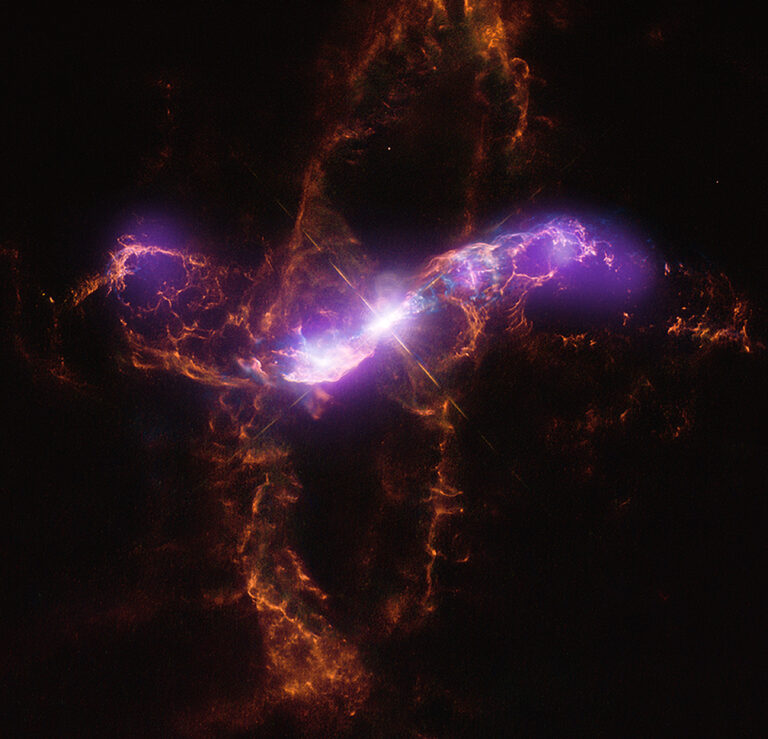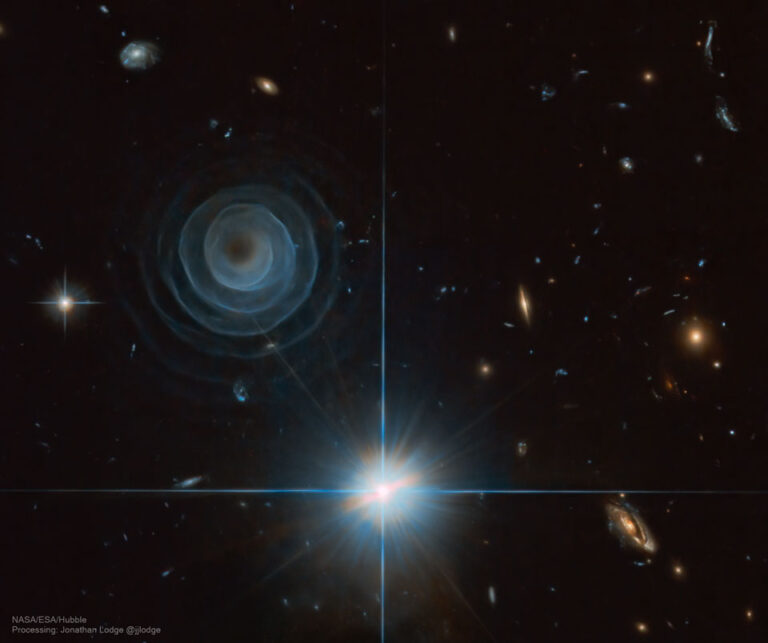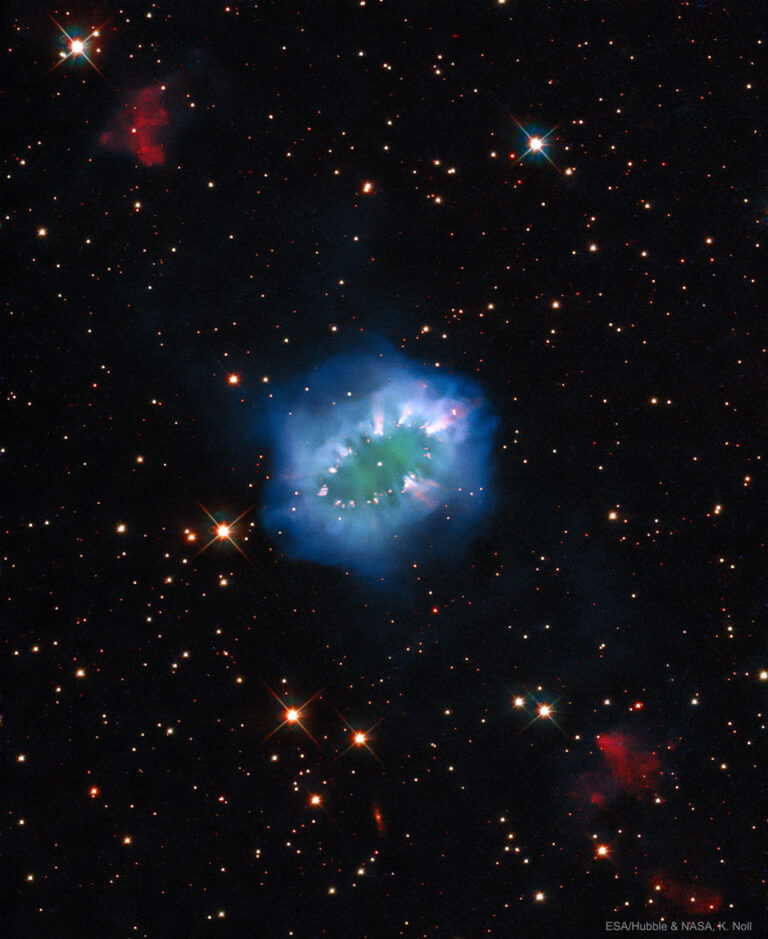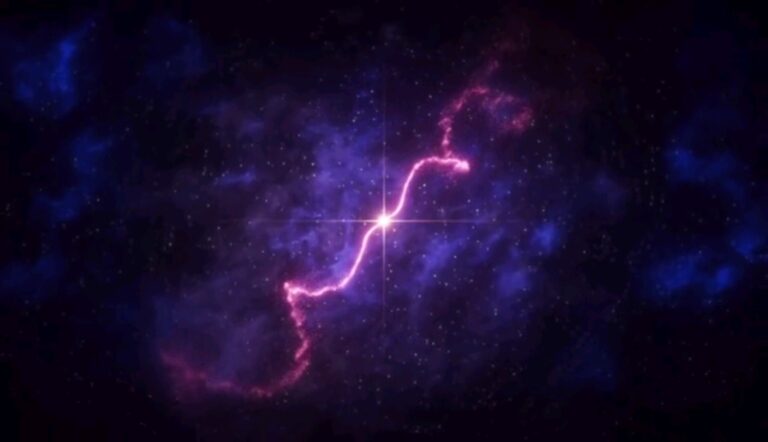2021年11月29日 The Extraordinary Spiral in LL Pegasi Image Credit: NASA, ESA, Hubble, HLA; Processing & Copyright: Jonathan Lodge Explanation: What created the strange spiral structure on the upper left? No one is sure, although it is likely related to a star in a binary star system entering the planetary nebula phase, when its outer atmosphere is ejected. The huge spiral spans about a third of a light year across and, winding four or five complete turns, has a regularity that is without precedent. Given the expansion rate of the spiral gas, a new layer must appear about every 800 years, a close match to the time it takes for the two stars to orbit each other. The star system that created it is most commonly…






